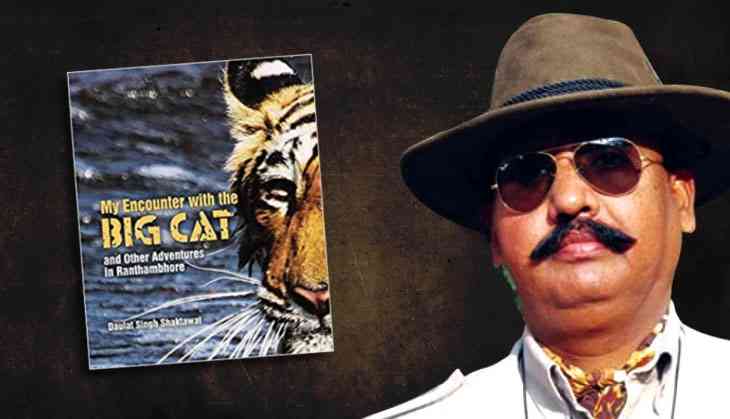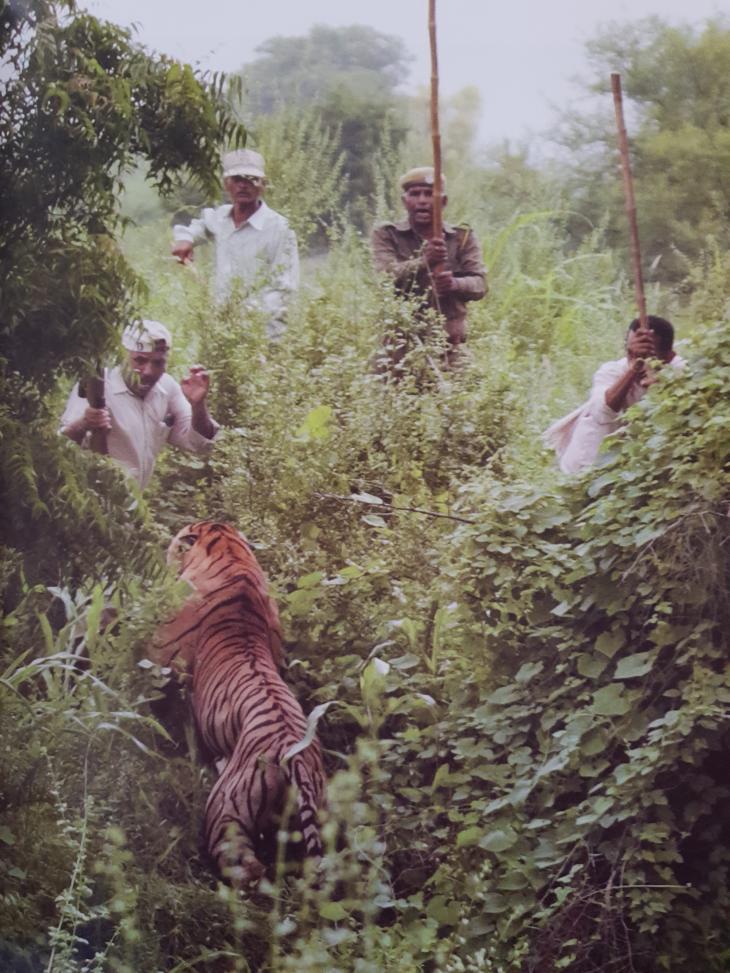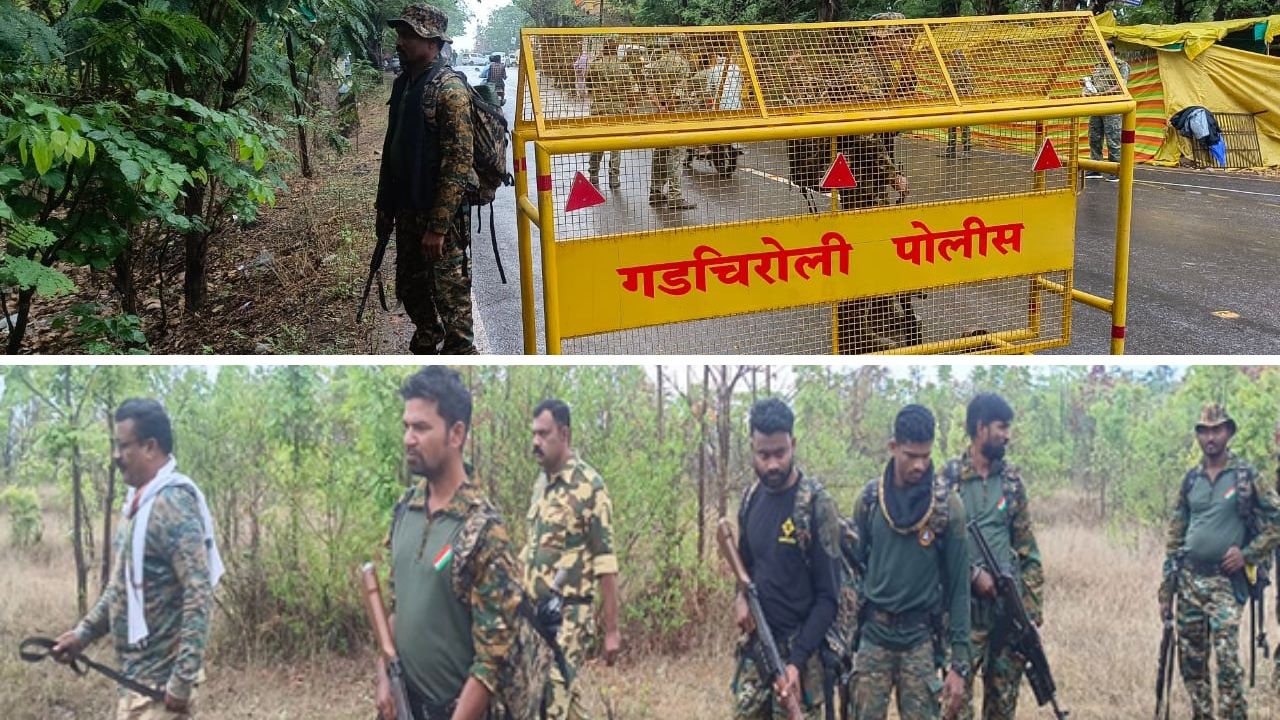The beast that burns bright and a forest ranger: My encounter with Big Cat... review

Title: My Encounter with the Big Cat and other Adventures of Ranthambore
Author: Daulat Singh Shaktawat
Publisher: Niyogi Books
Price: Rs 695
On 20 August, 2010, Forest Ranger Daulat Singh Shaktawat was about to leave for his early morning patrol in the Ranthanbore Tiger Reserve when he received a wireless message from another forest officer informing him about a male tiger that had strayed into human habitation and killed a buffalo. The tiger was hiding in the millet crop field near a village on the periphery of the forest.
Having handled such conflict situations in the past, Shaktawat picked up a tranquilising gun and accompanied by other forest staff members went to the spot where the tiger was hiding. On reaching the spot, he found that irate villagers had gathered and wanted the tiger to be shifted out or killed immediately. The hostile crowd made it nearly impossible for the team to locate or even tranquilse the tiger.
After multiple attempts by him and his team, the tiger did not return to the forest and remained hidden in the crop field. However, under pressure from the locals, Shaktawat went into the field where the tiger was hiding and shot at him. The dart hit the tiger but the drug was not released in his body. On realising this, Shakhawat further ventured into the tall grass and suddenly the tiger pounced on him.
Soon he realised that his hand in the tiger's jaws, he tried to fend off the attack but the tiger had other intentions. He then began mauling Shaktawat whose head was now in the tigers jaws. On a visit to Ranthambore in 2013, I met Shaktawat at the Sawai Madhopur forest office, where he informed how he could hear the bones of his skull break like dry twigs.

“Blood was oozing out of my skull that had been torn apart and my left eye was hanging out. I shoved the eye in and asked the forest staff to take me to the nearest hospital. I could feel the blood gushing down my throat. I thought I was going to die,” he said.
In the hospital, which had no electricity, the doctors gave him first aid with the help of torches and in a hurry to stop the bleeding, they stitched his upper eyelid next to his cheek. He was then shifted to SMS Hospital in Jaipur where he was informed that the optic nerve of his left eye had been completely damaged and he would never regain sight.
However, after innumerable operations and plastic surgeries, other doctors were able to somewhat restore his look. “The left side of my face has been numb since the incident. Several metallic plates have been placed beneath the skin to make the face look real. I have no sensation on the left of my face. I also have a fake eye which I take out every night before going to bed,” he said.
It took him nearly two years and multiple surgeries to heal completely and once he did, he wanted to return to the forest where he had spent most of his life. He had said, “I would thank the doctors who could restore my face. But, I am just not made to sit on a desk for the remainder of my life. If I have survived that horrific attack it means that even God wants me to live doing what I did.”
For those who are interested in knowing more about the event that led to his near death experience and slow recovery, they should pick up a copy of his recently released book, My Encounter with the Big Cat and other Adventures of Ranthambore. However, this incident is just one of the chapters in his book which goes way beyond the horrific experience.
Using numeric identity of tigers, he has described their behaviour, location, territories and activities in great detail which is a great resource for tracking and monitoring tigers in the wild. In this chapter, he shares how pug marks are a sure shot way of reaching the tigers. While narrating his experiences of tracking a tiger through pugmarks, he also explains how the use of technology led to forest departments using camera trapping to assess the numbers of tigers in any landscape.
He also discusses the use of radio telemetry to monitor tigers for which he received training at the Wildlife Institute of India in Dehradun. He narrates how he has used the technique during emergency situations to immobilise big cats and other carnivores and herbivores for treatment and management related activities.
In fact, when T7, the tiger that attacked him, was being translocated to Sariska from Ranthambore, Shaktawat was there with the traquilising team despite not having recovered fully. In another chapter, he reminiscences the story of Ustad, a ferocious male, who in his prime covered a large part of the reserve and was later shifted to a zoo after a spate of attacks on humans.
The author narrates Ustad's life journey, the tiger he followed closely and saw him grow up and become the dominant male. In fact, Ustad is said to have killed four humans, including forest staff, during his stay at the park which led to massive hue and cry amongst the department which feared for their lives and wanted the tiger to be shifted out. However, wildlife activists didn't want Ustad to be shifted and took their fight to the streets, online forums and even the Supreme Court. However, he was eventually shifted to Udaipur Zoo and Shaktawat was part of the team that tranquilised him.
In the book, the author says that Ustad's behaviour may not be like that of a man eater, but he was definitely not a normal tiger who had no fear of the humans. “Ustad had probably realised the vulnerability of humans as easy prey whenever he encountered them at close proximity,” he writes in the book. This is a way suggests that even the author wanted the tiger to be moved out considering how he had become a threat to the lives of the front-line staff and others who venture into the forests for tourists and pilgrims.
Another chapter on two cubs who lost their mother and how they were being monitored and taken care off by the forest department makes a very gripping story. The story of how the two cubs separated and then came together is scintillating. Another chapter about a leopard that was showing signs of extremely abnormal behaviour and Shaktawat had predicted it to be a case of the animal suffering from rabies speaks volumes about his experience in the field.
Full of anecdotes from the field, accompanied by rare photographs of various animals makes this book a must read for anyone who is interested in knowing more about the tiger, its behaviour and many more facets that are rarely discussed. It is also a must read for anyone who wants to know more about one of the most popular tiger reserves in India.
First published: 6 May 2018, 23:04 IST




_251021_300x172.jpg)

![BJP's Kapil Mishra recreates Shankar Mahadevan’s ‘Breathless’ song to highlight Delhi pollution [WATCH] BJP's Kapil Mishra recreates Shankar Mahadevan’s ‘Breathless’ song to highlight Delhi pollution [WATCH]](http://images.catchnews.com/upload/2022/11/03/kapil-mishra_240884_300x172.png)

![Anupam Kher shares pictures of his toned body on 67th birthday [MUST SEE] Anupam Kher shares pictures of his toned body on 67th birthday [MUST SEE]](http://images.catchnews.com/upload/2022/03/07/Anupam_kher_231145_300x172.jpg)






